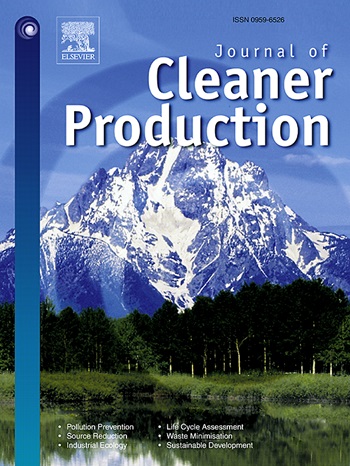循环设计过程的生命周期评估:系统的文献综述
IF 10
1区 环境科学与生态学
Q1 ENGINEERING, ENVIRONMENTAL
引用次数: 0
摘要
本研究系统地考察了生命周期评估(LCA)在支持和验证各行业循环设计(CD)策略中的作用。使用PRISMA框架,对99项研究进行了分析,以评估LCA如何应用于评估循环战略的有效性。研究结果显示,资源效率和废物最小化(32.5%)以及生命末期规划(27.8%)是最常被评估的策略。相比之下,产品寿命(10.8%)、循环商业模式(14.2%)和可持续材料(14.6%)受到的关注相对较少。建筑行业(38%)对多种循环战略的实施程度最高,其次是汽车行业(32%),在该行业,LCA在验证材料效率和轻量化方法方面发挥了重要作用。虽然包装和风能行业在闭环系统和材料回收中有针对性地应用了LCA,但纺织(8%)、化工(12%)和海洋应用(6%)等行业的代表性仍然不足。LCA在量化循环战略的环境效益和权衡方面发挥着关键作用,为资源优化、减排和废物最小化提供了有价值的见解。通过评估热点和绩效指标,LCA可以帮助设计师、制造商和政策制定者在循环干预方面做出明智的决策。然而,方法上的不一致、数据的限制以及缺乏评估多战略协同效应的标准化指标阻碍了更广泛的实施。此外,某些战略,如节水和增材制造(各占2%),尽管与循环经济目标相关,但在很大程度上仍未得到探索。为了解决这些差距,未来的研究应优先考虑标准化LCA方法,扩大其在代表性不足的部门的应用,并开发一种更结构化的方法来评估循环战略之间的协同作用。通过提供统一的CDS分类和跨部门综合,本综述支持将LCA有效地整合到循环设计实践中,并为未来的研究、行业应用和政策制定提供可操作的见解。本文章由计算机程序翻译,如有差异,请以英文原文为准。
Life cycle assessment in circular design process: A systematic literature review
This study systematically examines the role of Life Cycle Assessment (LCA) in supporting and validating Circular Design (CD) strategies across industries. Using the PRISMA framework, 99 studies were analyzed to assess how LCA has been applied to evaluate the effectiveness of circular strategies. The findings reveal that Resource Efficiency and Waste Minimization (32.5 %) and End-of-Life Planning (27.8 %) are the most frequently assessed strategies. In contrast, Product Longevity (10.8 %), Circular Business Models (14.2 %), and Sustainable Materials (14.6 %) receive comparatively less attention. The construction sector (38 %) demonstrates the highest implementation of multiple circular strategies, followed by the automotive industry (32 %), where LCA has been instrumental in validating material efficiency and lightweighting approaches. While packaging and wind energy sectors show targeted applications of LCA in closed-loop systems and material recovery, industries such as textiles (8 %), chemicals (12 %), and marine applications (6 %) remain underrepresented. LCA plays a critical role in quantifying the environmental benefits and trade-offs of circular strategies, offering valuable insights into resource optimization, emissions reduction, and waste minimization. By assessing hotspots and performance metrics, LCA helps designers, manufacturers, and policymakers make informed decisions on circular interventions. However, methodological inconsistencies, data limitations, and the lack of standardized metrics for evaluating multi-strategy synergies hinder broader implementation. Additionally, certain strategies, such as Water Efficiency and Additive Manufacturing (2 % each), remain largely unexplored despite their relevance to circular economy objectives. To address these gaps, future research should prioritize standardizing LCA methodologies, expanding its application in underrepresented sectors, and developing a more structured approach to evaluating synergies between circular strategies. By offering a unified CDS classification and cross-sectoral synthesis, this review supports the effective integration of LCA in circular design practices and provides actionable insights for future research, industry application, and policy development.
求助全文
通过发布文献求助,成功后即可免费获取论文全文。
去求助
来源期刊

Journal of Cleaner Production
环境科学-工程:环境
CiteScore
20.40
自引率
9.00%
发文量
4720
审稿时长
111 days
期刊介绍:
The Journal of Cleaner Production is an international, transdisciplinary journal that addresses and discusses theoretical and practical Cleaner Production, Environmental, and Sustainability issues. It aims to help societies become more sustainable by focusing on the concept of 'Cleaner Production', which aims at preventing waste production and increasing efficiencies in energy, water, resources, and human capital use. The journal serves as a platform for corporations, governments, education institutions, regions, and societies to engage in discussions and research related to Cleaner Production, environmental, and sustainability practices.
 求助内容:
求助内容: 应助结果提醒方式:
应助结果提醒方式:


